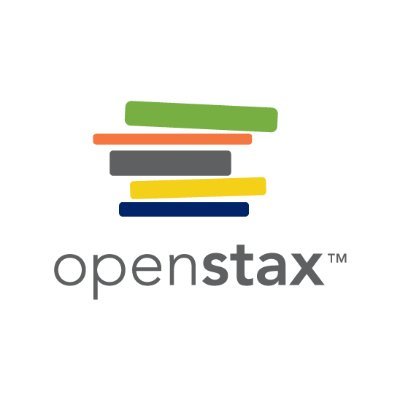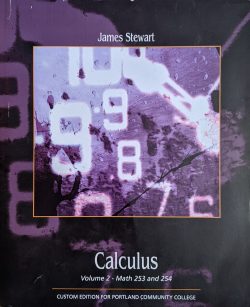MTH 251
Welcome to the homepage for MTH 251!
This page will be used to access files and for general information purposes.
Homework
There are two different textbook options you may choose in order to complete your homework. You may choose either
- Gilbert Strang and Edwin Herman’s Calculus Volume 1
- James Stewart’s Calculus: Concepts and Contexts, 4th Edition
Select homework sets are provided below for either option you choose. The homework prompts listed are a starting point to practice the material we learned in class (or from the videos). Some people may feel they need more practice after working through these prompts, and that is great to have that self-awareness! In this case, try some of the even prompts between the assigned odd ones.
Strang and Herman’s Calculus Volume 1 and Calculus Volume 2 
- Intro to Calculus: Section 2.1: 1 – 21 all
- Limits: Section 2.2: 35, 37 (use a = 2), 39, 43, 47, 49 – 52 all, 59 – 64 all, 77, 79
- Limit Laws: Section 2.3: 83 – 86 all, 107 – 111 all, 115, 117 – 123 all
- Continuity: Section 2.4: 131, 133, 141, 147, 159, 163; then Section 2.3: 89 – 105 odd
- Limits Involving Infinity: Section 4.6: 261 – 270 all
- Derivative at a Number: Section 3.1: 5, 11, 15, 17, 19, 21, 25, 29, 39, 40, 47, 49, 51
- The Derivative Function: Section 3.2: 55, 57, 59, 61, 65, 66, 67, 69, 71, 78, 79, 81, 85, 91, 93, 97, 99
- Differentiation Rules: Section 3.3: 107, 109, 113, 115, 118, 119, 130, 133, 135, 137; then Section 3.4: 151 – 157 odd
- The Product & Quotient Rules: Section 3.3: 113 (use the Product Rule), 117, 120, 121, 127, 128, 129, 131, 132, 139, 141, 145, 146, 147; then Section 3.4: 165; then Section 3.9: 331
- Derivative of Trigonometric Functions: Section 3.5: 175 – 203 odd
- The Chain Rule: Section 3.6: 215, 221 – 237 odd, 243, 253; then Section 3.9: 332, 334, 335
- Implicit Differentiation: Section 3.8: 300 – 313 all, 319
- Derivatives of Inverse Functions: Section 3.7: 279, 280, 283, 284, 285, 295, 298; then Section 3.8: 321; then Section 3.9: 336 – 339 all
- Derivatives and Logarithms: Section 3.9: 333, 340 – 352 all, 357, 361
- Related Rates: Section 4.1: 5, 7, 9 – 15 all, 17, 21, 25, 27
- Extrema: Section 4.3: 91, 93, 97, 101, 105, 109, 111, 113; then Section 4.5: 221, 223, 225, 227, 229
- The Mean Value Theorem: Section 4.4: None
- Curve Sketching: Section 4.5: 233, 234, 235, 237, 238, 239, 240
Stewart’s Calculus: Concepts & Contexts, 4th Edition 
- Intro to Calculus: §2.1 (p. 94): # 1 – 8 all
- Limits: §2.2 (p. 102): # 1 – 7 odd, 13 – 16 all, 21 – 24 all
- Limit Laws: §2.3 (p. 111): # 1 – 23 odd, 33 – 37 odd
- Continuity: §2.4 (p. 121): # 1 – 23 odd, 35
- Limits Involving Infinity: §2.5 (p. 132): # 1 – 9 odd, 15 – 37 odd, 39, 41, 51
- Derivative at a Number: §2.6 (p. 142): # 1, 3ab, 5, 7, 9ab, 11 – 23 odd, 27 – 39 odd, 47
- The Derivative Function: §2.7 (p. 155): # 1 – 15 odd, 19 – 27 odd, 35, 37, 43
- Differentiation Rules: §3.1 (p. 181): # 3 – 29 odd, 41, 42, 45, 47, 49
- The Product and Quotient Rules: §3.2 (p. 188): # 1 – 31 odd, 33a, 39
- Derivative of Trigonometric Functions: §3.3 (p. 195): # 1 – 21 odd, 23a, 25a, 27 – 39 odd
- The Chain Rule: §3.4 (p. 205): # 1 – 43 odd, 49, 67
- Implicit Differentiation: §3.5 (p. 214): # 1 – 27 odd, 31 – 35 odd, 41
- Derivatives of Inverse Functions: §3.6 (p. 220): # 1 – 7 odd, 17 – 28 all
- Derivatives and Logarithms: §3.7 (p. 226): # 1 – 29 odd, 33 – 41 odd
- Related Rates: §4.1 (p. 260): # 1, 5, 9, 13, 17, 21, 23, 29, 33, 39
- Extrema: §4.2 (p. 268): # 7, 11, 15, 17, 21, 23, 27, 31, 35, 41 – 53 odd
- The Mean Value Theorem: §4.3 (p. 279): # 1 – 29 odd, 33
- Curve Sketching: §2.8 (p. 162): # 1 – 27 odd, 31; and §4.4 (p. ??): #
Labs
Each day will have a lab that will cover a particular section of material that we have previously explored in class. You may work alone or in a group to work through the corresponding worksheet found below. These worksheets will not be collected.
Periodically, a Lab Report will be assigned on D2L. This lab report will be a collection of prompts that are either the same or similar to prompts from lab worksheets. This lab report must be written neatly on new paper according to the stipulations below:
- Each prompt must be clearly written out before beginning any work.
- Each new prompt must begin on a separate page.
- All of your work must be thoroughly shown for each prompt.
- Your conclusion must be clearly stated at the end of your work with any necessary units and exact values (unless otherwise stated).
- Lab Day One
- Lab: Intro to Calculus
- Lab: Limits
- Lab: Limit Laws
- Lab: Continuity
- Lab: Limits Involving Infinity
- Lab: Derivative at a Number
- Lab: The Derivative Function
- Lab: Differentiation Rules
- Product & Quotient Rules
- Lab: Derivatives of Trigonometric Functions
- Lab: Chain Rule
- Lab: Implicit Differentiation
- Lab: Derivatives of Inverse Functions
- Lab: Derivatives & Logarithms
- Lab: Related Rates
- Lab: Extrema & MVT
Reviews
Below are some reviews for both the midterm exam and the final exam. Use these reviews to study for the exam. These will not be collected or covered in class.
- Review for Midterm Exam
- Key for Midterm Exam Review
- Derivatives Review (with Key)
- Review for Final Exam
- Key for Final Exam Review
Extra Credits
There are two extra credit opportunities available to you. Please complete these any time before the last week of instruction.
- Extra Credit 1: Women in Math: The Limit Does Not Exist
- Extra Credit 2: The Mathematics of the Three Waves of AI
Videos
Two PCC instructors have produced video series for MTH 251. Feel free to check out their videos below.
- Austina Fong’s MTH 251 Videos. For Austina’s videos, please note that she organizes them by section number. These sections are consistent with the sections we follow.
- Jessica Bernards’ MTH 251 Videos. For Jessica’s videos, please note that she organizes them by topic. The corresponding textbook section numbers are listed below.
| Textbook Section | Corresponding Video Number |
| Introduction to Calculus | 1 |
| Limits | 2 |
| Limit Laws | 3, 4, 5, 6 |
| Continuity | 7, 8 |
| Limits Involving Infinity | 9, 10, 11 |
| Derivative at a Number | 12, 13 |
| The Derivative Function | 14, 15, 16, 17 |
| Curve Sketching (Part 1) | 18, 19 |
| Differentiation Rules | 20, 21 |
| The Product & Quotient Rules | 22, 23, 41 |
| Derivative of Trigonometric Functions | 24, 25, 26 |
| The Chain Rule | 27, 28, 29, 40 |
| Implicit Differentiation | 30, 31, 32 |
| Derivatives of Inverse Functions | 33 |
| Derivatives and Logarithms | 34, 35 |
| Related Rates | 36, 37 |
| Extrema | 38 |
| The Mean Value Theorem | 39 |
Precalculus Review Materials
PCC has created a wealth of information for precalculus review. If you identify any topics you need assistance with, check this site out.
